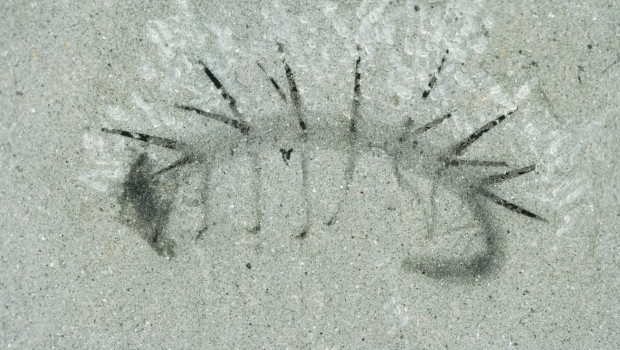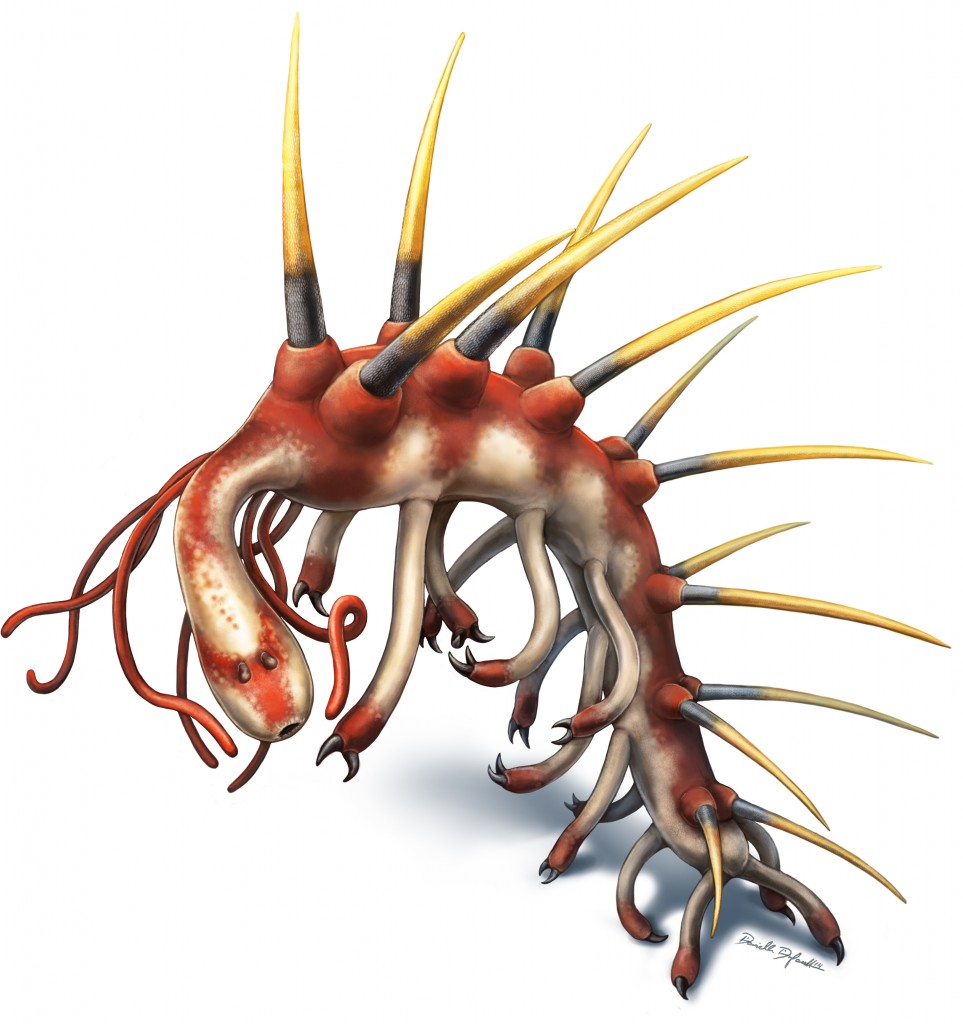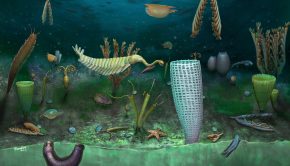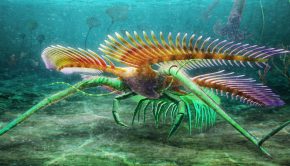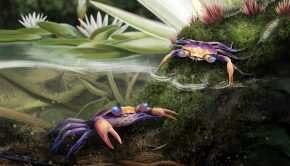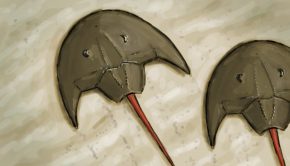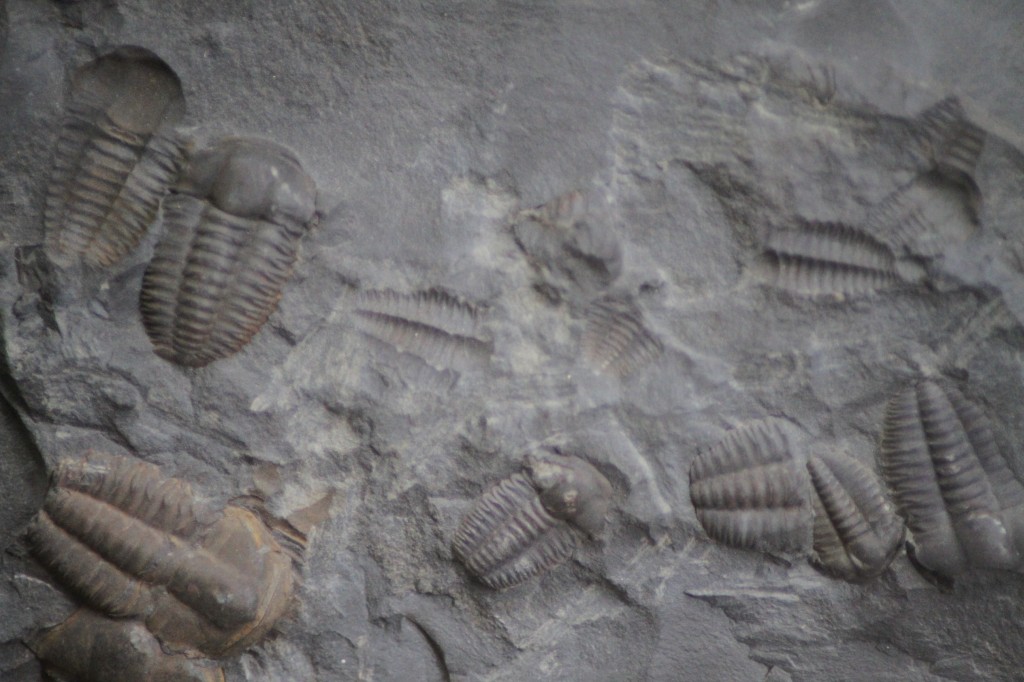Episode 47: Lobopodians
It’s been quite a week for lobopodians!
First off, we’ve had the redescription of Hallucigenia by Dr Martin Smith. This enigmatic fossil from the Burgess Shale typifies the difficulty palaeontologists have had in interpreting some of the earliest animals in the fossil record. It has famously been reconstructed upside-down and is now shown to also have been back-to-front too! Dr Smith joins us to tell us about the observations, including some new anatomical characters, that put an end to the uncertainty of the orientation of this animal.
Secondly, there’s a older and more heavily-armoured lobopodian from the early Cambrian Xiaoshiba biota of China that we’ve got the exclusive on. Collinsium ciliosum is described today and we’re also joined by one of the lead authors Dr Javier Ortega-Hernández. This new study is the most complete description of a ‘Collins’ monster type’ lobopodian to date and includes the most comprehensive analysis of lobopodian disparity yet performed.
Both our guests weigh in on the importance of their finds, which have evolutionary significance for the majority of animal life today.
Podcast: Download (Duration: 46:05 — 63.3MB)
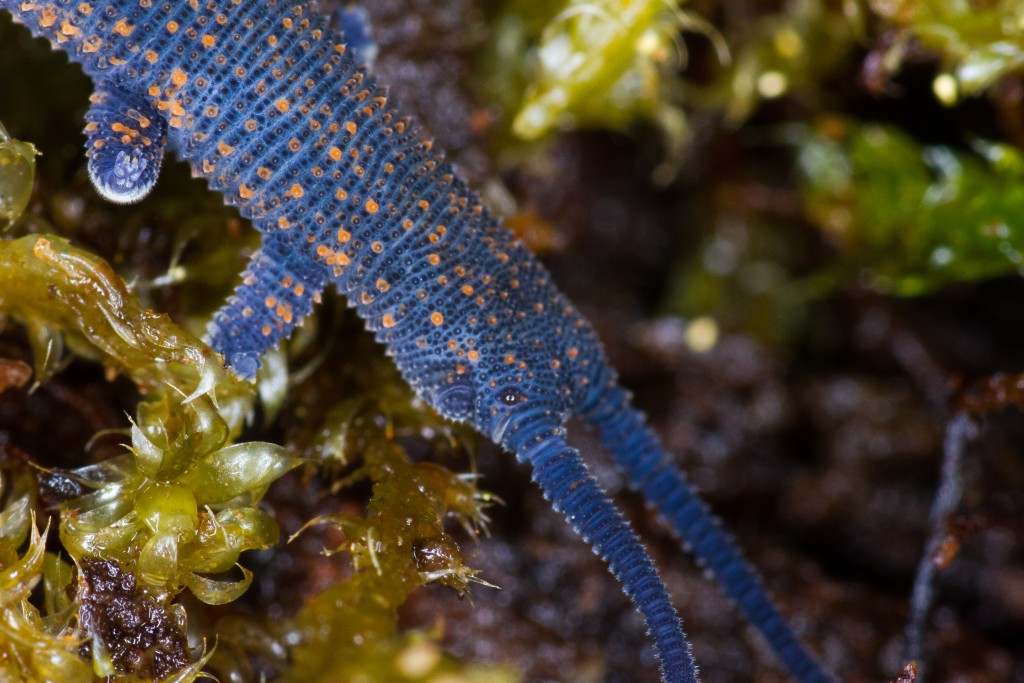
Lobopodians are not a legitimate biological group, but are a convenient way of referring to all animals with lobopodous limbs (lobopod translating from Greek as ‘blunt-feet’). Animals that could be considered ‘living lobopodians’ include the Onychophora, or velvet worms (pictured) and the Tardigrada, or waterbears. Lobopodians are all part of a larger group called Ecdysozoa, which also includes arthropods and nematodes. Image credit: Frupus CCBYNC 2.0.
A National Geographic video showing some of the ecology of a velvet worm. We’re not convinced it’s one of the world’s deadliest animals, but that probably depends on whether you’re a rainforest-dwelling beetle or not.
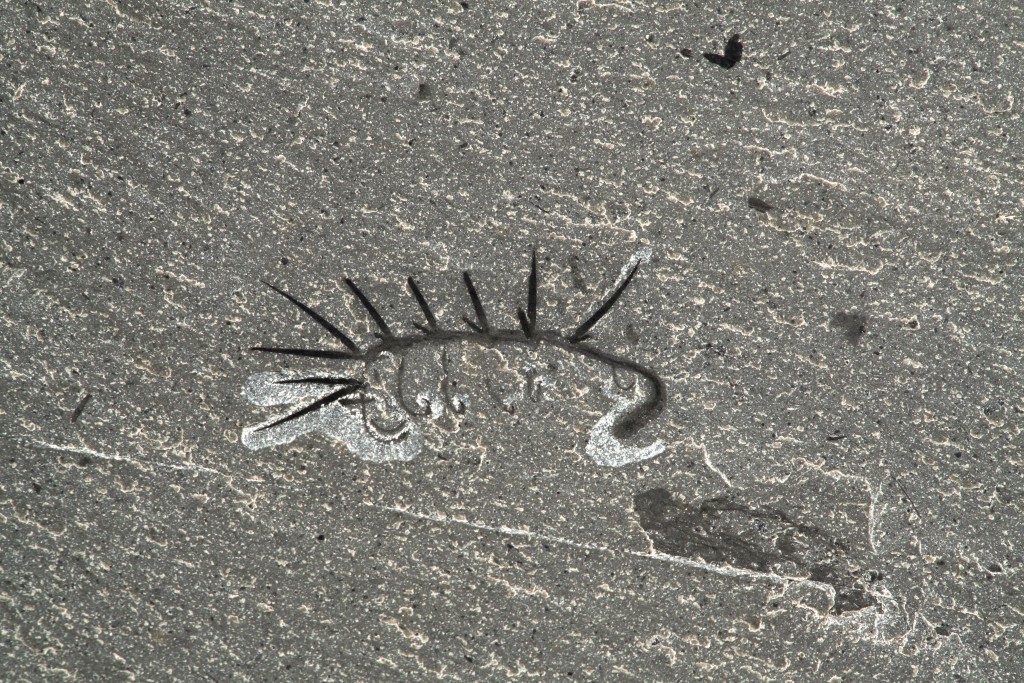
Hallucigenia sparsa from the Burgess Shale (Royal Ontario Museum 61513), 15 mm long. Hallucigenia was originally interpreted upside-down, with its spikes in the sediment and its appendages collecting and passing food towards its large, bulbous head. Image credit: Jean-Bernard Caron.
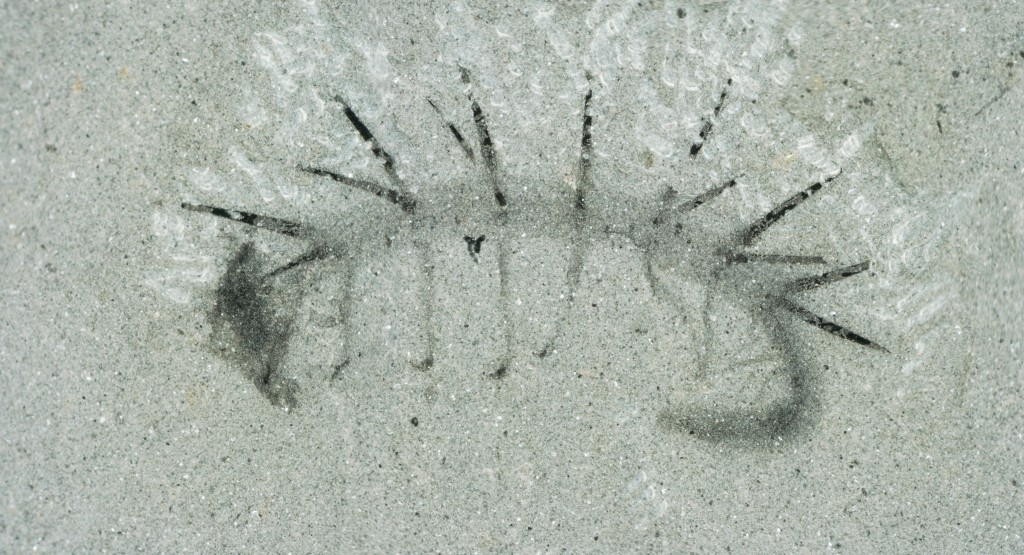
Hallucigenia was since recognised as a stem-group onycophoran and flipped, so that it stood the right way up, but ambiguity still existed as to which ends were the front and back. Image: NMNH 198658 (Smithsonian Institute),15 mm long. Image credit: Martin R. Smith.
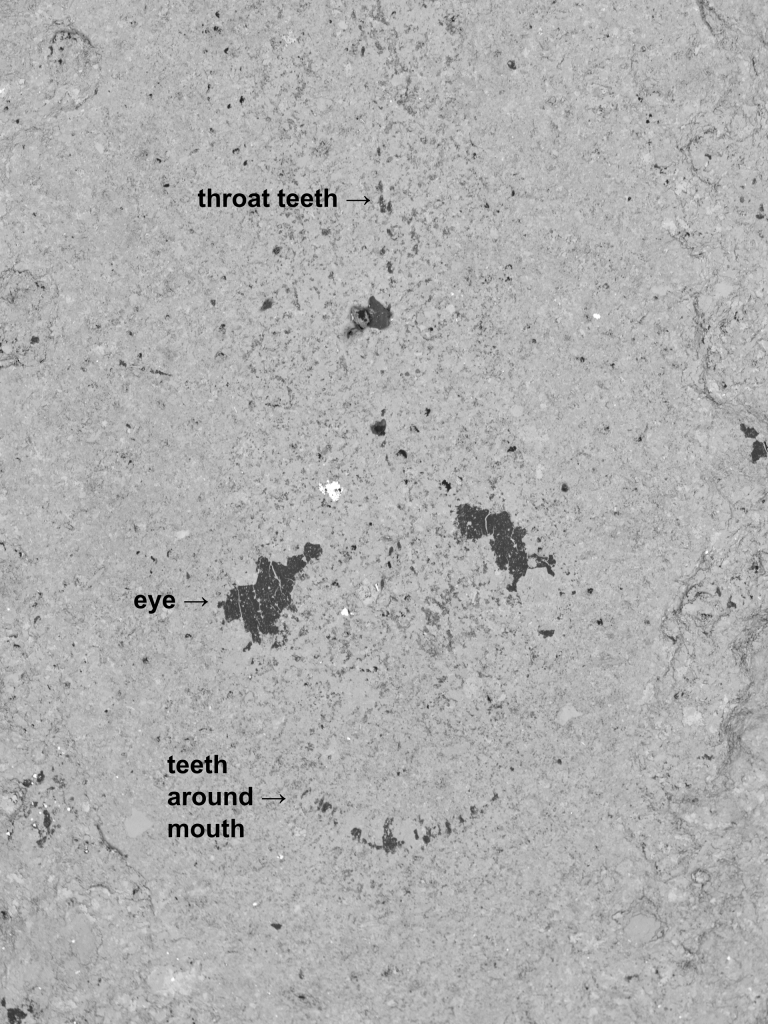
The study led by Dr Smith has conclusively proven the smaller end to be the head by the discovery of the eyes and teeth. The larger, bulbous end is interpreted to be fluids escaped from the body. Image: Electron microscope image of Hallucigenia‘s head, showing eyes, circum-oral (’round-the-mouth’) teeth, and pharyngeal (‘throat’) teeth. Field of view is 1 mm. ROM 63146. Image credit: Martin R. Smith and Jean-Bernard Caron.
3D reconstruction of Hallucigenia sparsa‘s walking gait. Credit: Lars Fields.
Dr Martin Smith discussing his research for Nature video.
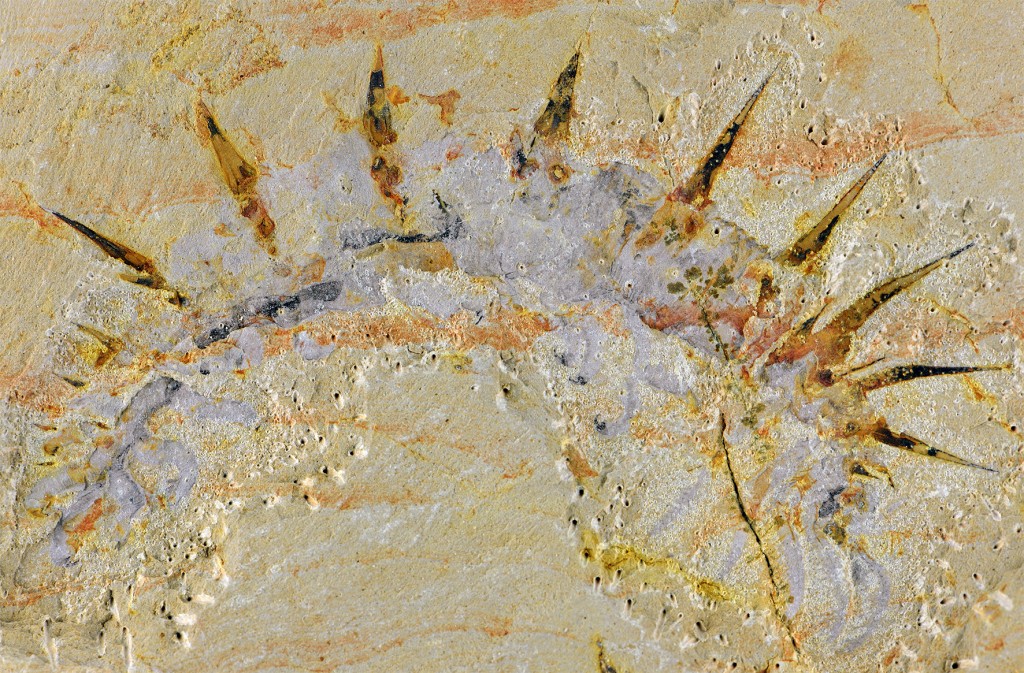
Collinsium ciliosum, a newly-described Collins’ monster-type lobopodian from the early Cambrian Xiaoshiba biota of China. Image credit: Jie Yang, Yunnan University.
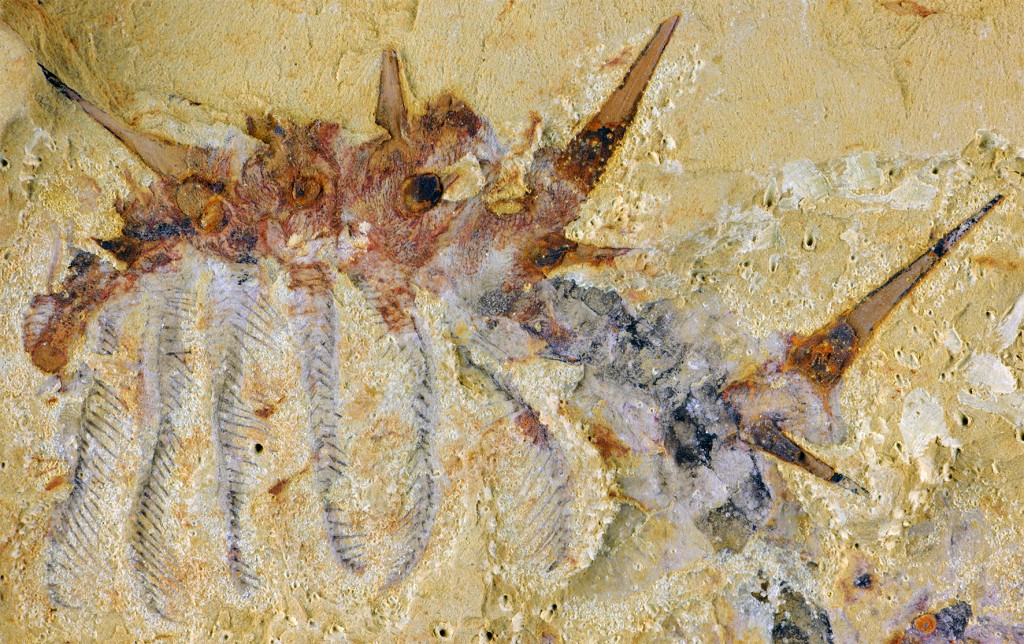
As Collinsium‘s nine pairs of clawed rear legs were not well-suited for walking along the muddy ocean floor, it is likely it eked out an existence by clinging onto sponges or other hard substances by its back claws, while sieving out its food with its feathery front legs. Image credit: Jie Yang, Yunnan University.
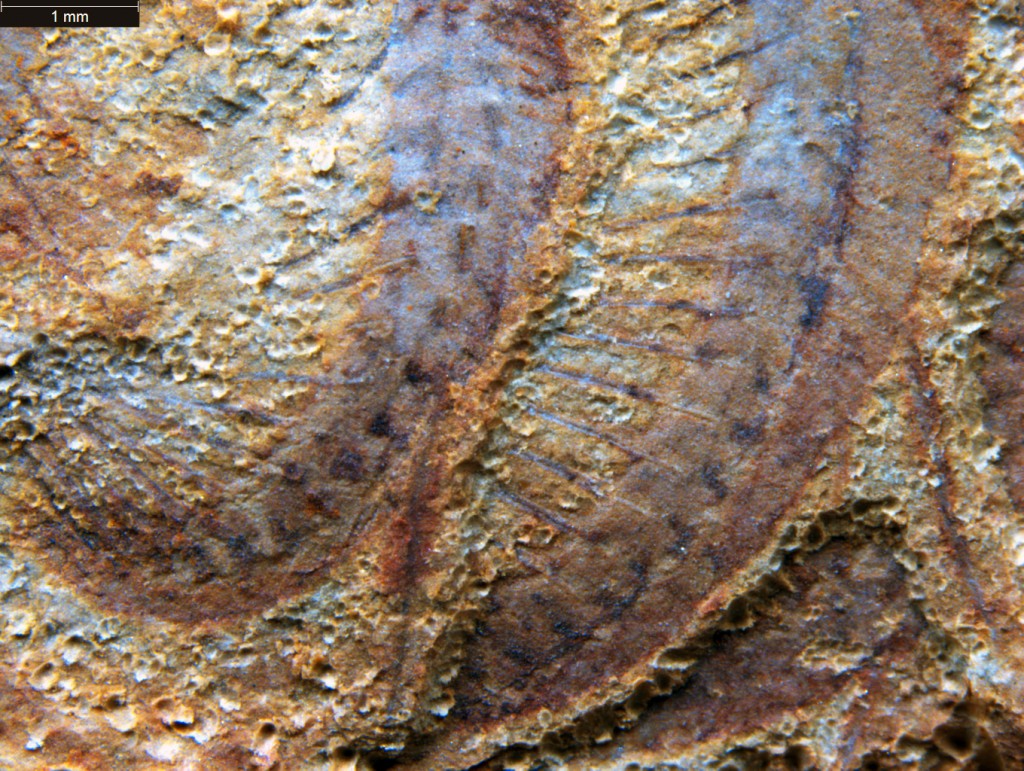
Close up of the anterior setulose trunk legs. Note the submillimetric spacing between the individual setae, and the flexibility of the lobopodous limbs. These appendages would have been used to sieve organic particles from the water column for consumption as food. Image credit: Jie Yang, Yunnan University.
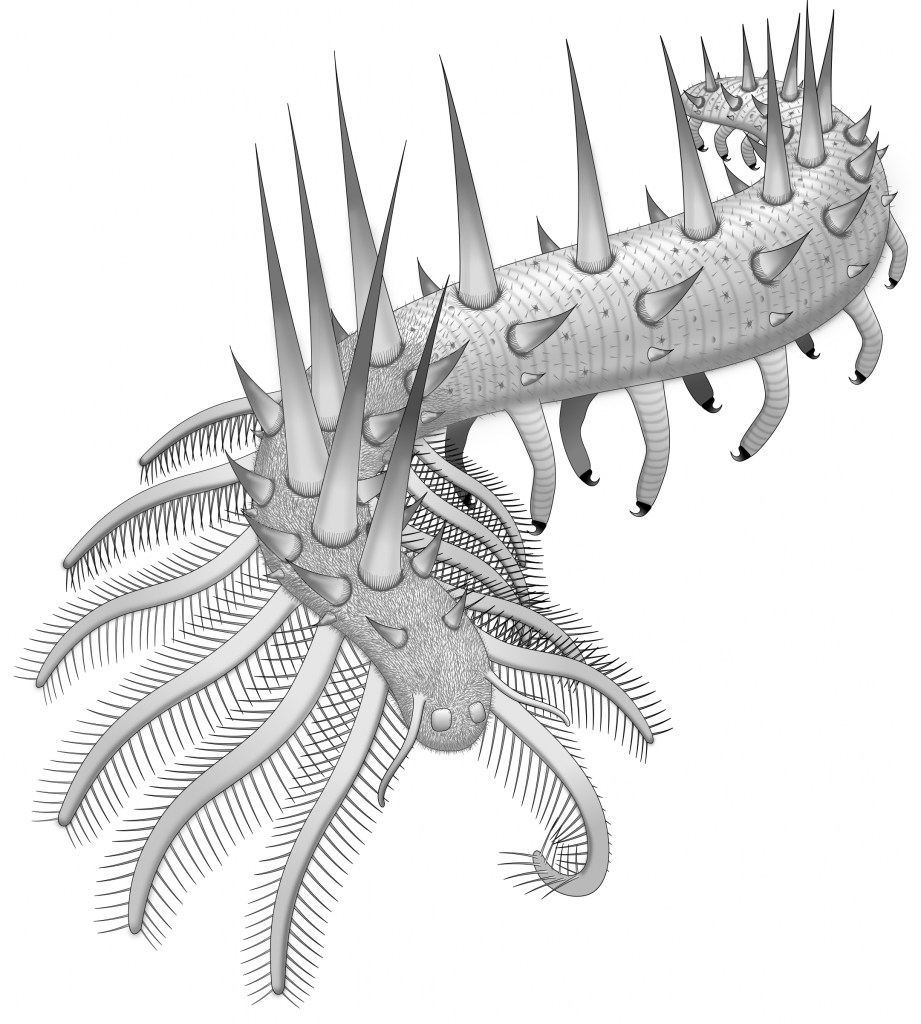
Reconstruction of Collinsium ciliosum, a Collins’ monster-type lobopodian from the early Cambrian Xiaoshiba biota of China. Image credit: Javier Ortega-Hernández, University of Cambridge.
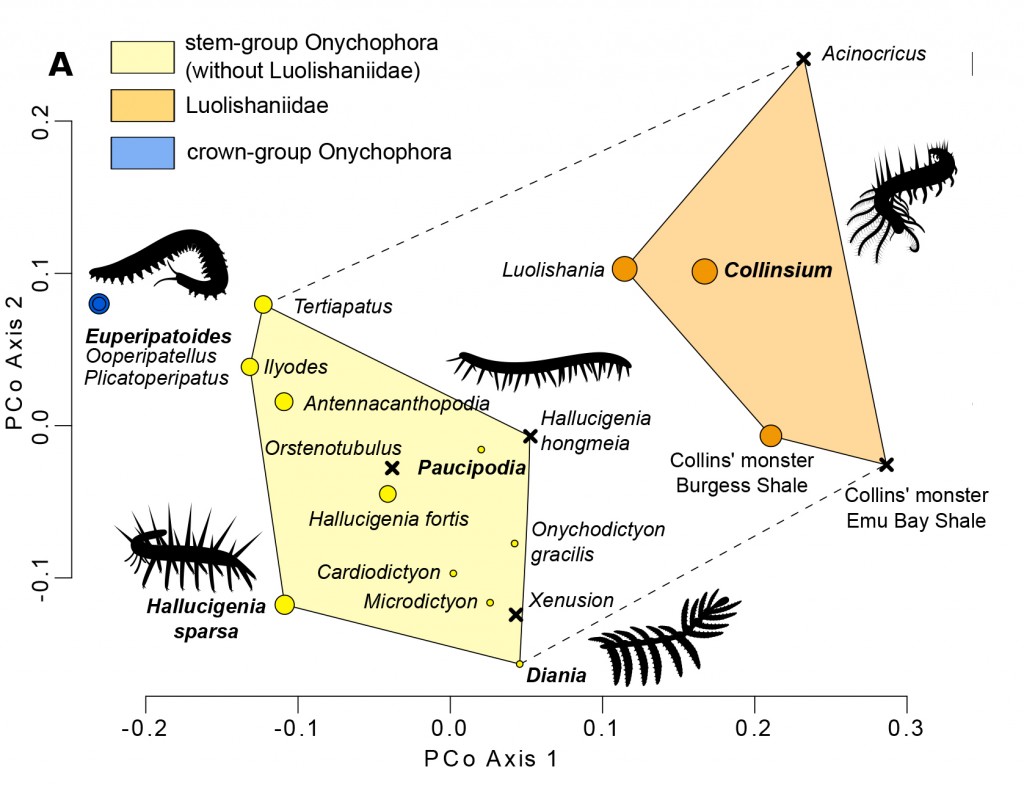
Visualization of morphological variation within total-group [crown- and stem-group] Onychophora. Note that crown-group [living] Onychophora occupy a very restricted area of morphospace, whereas stem-group representatives were much more variable in their morphology. Circle size is proportional to degree of limb complexity; note that Collinsium possesses the greatest limb complexity within total-group Onychophora. Image credit: Sylvain Gerber and Javier Ortega-Hernandez, University of Cambridge.

